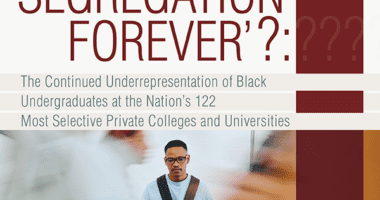‘Where Is the Compassion?’ Conversations About Baltimore and Educational Improvement
This week, I had dinner with my sister-in-law in Chevy Chase, Maryland, and was deeply immersed in our conversation about the Baltimore protests when a Jewish woman in her mid-60s asked to join us. Acknowledging that even though it was an odd request for a total stranger to ask to join our intimate conversation, we happily invited her to sit down and participate.
Visibly shaken, she shared how upset she was watching the local news and seeing video of young people destroying downtown Baltimore. Yet, through her anger and sadness, she understood how these protests might be the needed catalyst for change. She recalled the riots that destroyed multiple cities in the 1960s, particularly those that occurred after Martin Luther King Jr.’s death. And she said the protests we’ve seen in the past few months in New York City and Ferguson, Missouri, could be the needed wake-up call for improved civil rights today.
She said she was no stranger to discrimination. She told of her experiences growing up in the 1950s as a lesbian and the hatred she faced. And, reflecting on how that still exists today, she asked a poignant question: “Where is the compassion?”
I, too, began to ponder that — not just here in Maryland, but in the work I do every day at The Education Trust, advocating for low-income kids and kids of color. From the streets of Baltimore, Ferguson, and New York City to the classrooms all around our country, there is a wide disconnect between what we, as Americans, claim to value and the policies and practices that consistently rain down on those who are historically oppressed.
For example, U.S. school districts serving the largest populations of low-income students receive roughly $1,200 less per student in state and local funding than wealthier districts. And when taking into account the additional cost of educating a student in poverty, that funding gap grows to a whopping $2,200. With an achievement gap that persists and with schools in impoverished neighborhoods desperate for adequate funding, where is the compassion when state and local policymakers decide who gets what and who doesn’t?
Or consider the data that show low-income, black, and Latino kids are routinely taught by novice teachers who, more often than not, don’t get the needed support to be great teachers. Again, when placement decisions are made and there is irrefutable evidence of the strong role that teachers and school leaders have in raising student achievement, where is the compassion?
Or what about colleges and universities that routinely under-enroll smart, deserving students from low-income families, while others accept students but provide no support to guide them toward a meaningful diploma? Or the many other colleges that enroll low-income students and greedily consume their limited financial aid dollars, only to leave them with a subpar education that won’t lead to sustainable work that will support their families or, at the very least, allow them to pay back their student loans? As decision makers go about the business of how to best provide students a quality education, where is the compassion?
I returned to the woman sitting across from me at the dinner table, still troubled by the events in Baltimore. As we finished our after-dinner peppermint tea, she asked, “So what can I do?” Exactly what you are doing, I told her. Continue the conversation, continue pressing for answers, and continue seeking compassion.









